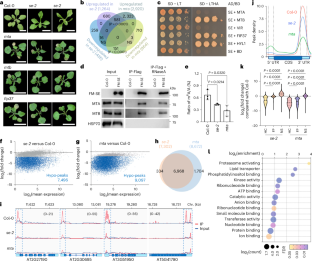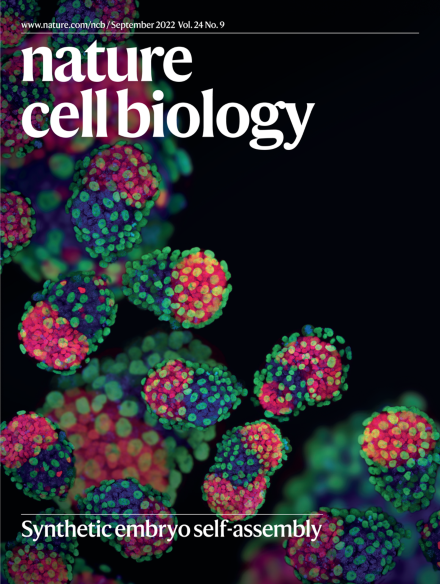SERRATE drives phase separation behaviours to regulate m6A modification and miRNA biogenesis
IF 19.1
1区 生物学
Q1 CELL BIOLOGY
引用次数: 0
Abstract
The methyltransferase complex (MTC) deposits N6-adenosine (m6A) onto RNA, whereas the microprocessor produces microRNA. Whether and how these two distinct complexes cross-regulate each other has been poorly studied. Here we report that the MTC subunit B tends to form insoluble condensates with poor activity, with its level monitored by the 20S proteasome. Conversely, the microprocessor component SERRATE (SE) forms liquid-like condensates, which in turn promote the solubility and stability of the MTC subunit B, leading to increased MTC activity. Consistently, the hypomorphic lines expressing SE variants, defective in MTC interaction or liquid-like phase behaviour, exhibit reduced m6A levels. Reciprocally, MTC can recruit the microprocessor to the MIRNA loci, prompting co-transcriptional cleavage of primary miRNA substrates. Additionally, primary miRNA substrates carrying m6A modifications at their single-stranded basal regions are enriched by m6A readers, which retain the microprocessor in the nucleoplasm for continuing processing. This reveals an unappreciated mechanism of phase separation in RNA modification and processing through MTC and microprocessor coordination. Zhong et al. find that SERRATE (SE) regulates the m6A methyltransferase complex (MTC) to control m6A deposition, and show cross-regulation between the MTC and the SE-mediated microprocessor governs miRNA production in Arabidopsis.


SERRATE 驱动相分离行为以调控 m6A 修饰和 miRNA 生物发生
甲基转移酶复合物(MTC)将 N6-腺苷(m6A)沉积到 RNA 上,而微处理器则产生 microRNA。对于这两种不同的复合体是否以及如何相互交叉调节,研究很少。在这里,我们报告了 MTC 亚基 B 倾向于形成活性较差的不溶性凝聚物,其水平由 20S 蛋白酶体监控。相反,微处理器成分 SERRATE(SE)会形成液态凝集物,这反过来又会促进 MTC 亚基 B 的可溶性和稳定性,从而导致 MTC 活性增加。一致的是,表达 SE 变体的低倍品系在 MTC 相互作用或液相行为方面存在缺陷,表现出 m6A 水平降低。反过来,MTC 可以将微处理器招募到 MIRNA 位点,促使初级 miRNA 底物的共转录裂解。此外,单链基底区携带 m6A 修饰的初级 miRNA 底物会被 m6A 阅读器富集,从而将微处理器保留在核质中继续处理。这揭示了通过 MTC 和微处理器的协调,在 RNA 修饰和处理过程中实现相分离的一种未被重视的机制。
本文章由计算机程序翻译,如有差异,请以英文原文为准。
求助全文
约1分钟内获得全文
求助全文
来源期刊

Nature Cell Biology
生物-细胞生物学
CiteScore
28.40
自引率
0.90%
发文量
219
审稿时长
3 months
期刊介绍:
Nature Cell Biology, a prestigious journal, upholds a commitment to publishing papers of the highest quality across all areas of cell biology, with a particular focus on elucidating mechanisms underlying fundamental cell biological processes. The journal's broad scope encompasses various areas of interest, including but not limited to:
-Autophagy
-Cancer biology
-Cell adhesion and migration
-Cell cycle and growth
-Cell death
-Chromatin and epigenetics
-Cytoskeletal dynamics
-Developmental biology
-DNA replication and repair
-Mechanisms of human disease
-Mechanobiology
-Membrane traffic and dynamics
-Metabolism
-Nuclear organization and dynamics
-Organelle biology
-Proteolysis and quality control
-RNA biology
-Signal transduction
-Stem cell biology
 求助内容:
求助内容: 应助结果提醒方式:
应助结果提醒方式:


